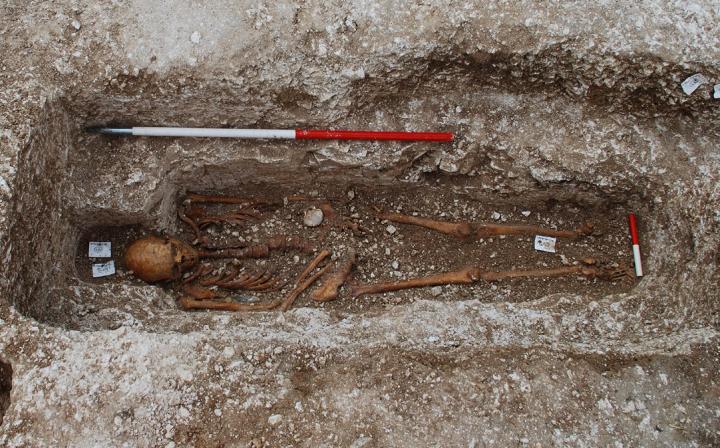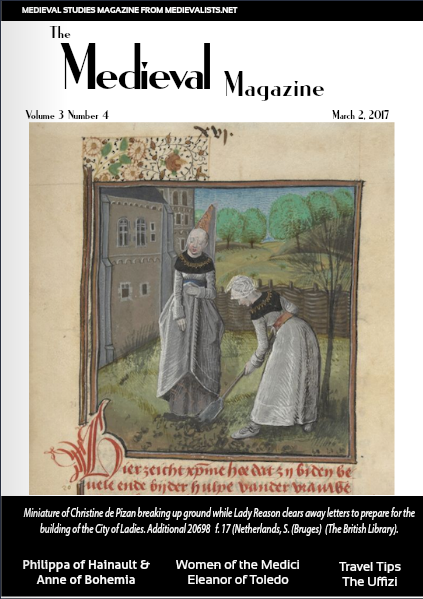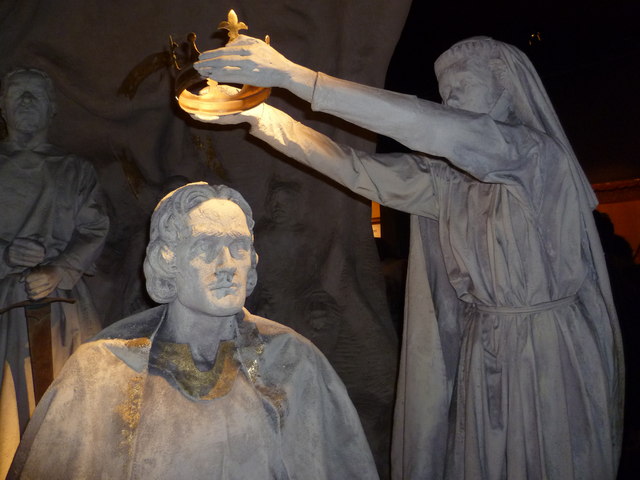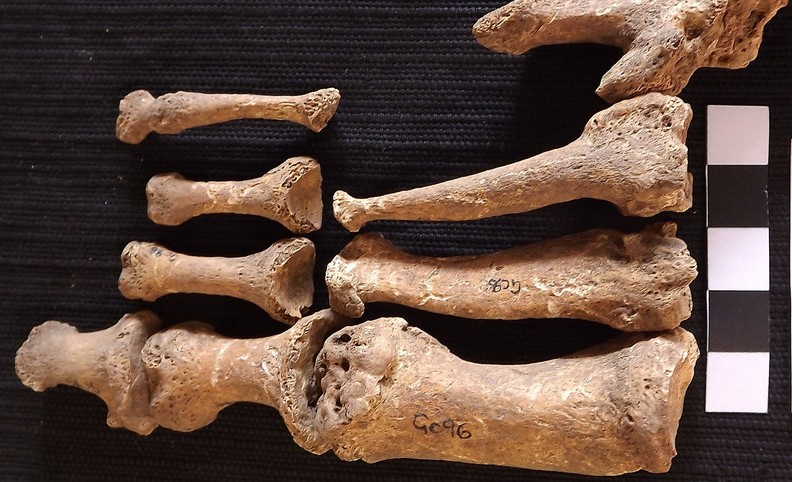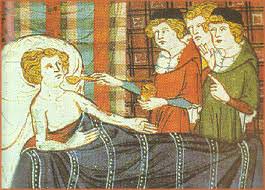Medieval Squirrels Linked to Spread of Leprosy in Humans
Squirrels in England carried leprosy bacteria as early as the Middle Ages. An international team of researchers has revealed a link between the pathogens found in the animals and people from a medieval leprosarium.
The remarkable world of hospitals, orphanages, and leprosaria, with Tim Miller
A conversation with Timothy Miller about philanthropic institutions in Constantinople, especially hospitals, orphanages, and leprosaria.
Medieval Well Poisoning Accusations with Tzafrir Barzilay
Medieval antisemitism flared up most famously and tragically during the Black Death when Jews were accused of deliberately poisoning wells, and thousands were executed for this wholly imagined crime. This week on The Medieval Podcast, Danièle speaks with Tzafrir Barzliay about what made well poisoning conspiracy theories so powerful, and how they started.
Leprosy at the edge of Europe—Biomolecular, isotopic and osteoarchaeological findings from medieval Ireland
We propose that the Vikings were responsible for introducing leprosy to Ireland.
Spread of leprosy tracked to early medieval Britain, researchers find
The largest study to date on ancient leprosy DNA reveals previously unknown diversity of strains in Medieval Europe
Medieval Fur Trade May Have Led to Spread of Leprosy
The authors of a new study suggest that an explanation for the prevalence of leprosy in medieval East Anglia may possibly be found in the sustained Scandinavian trade in squirrel fur – an animal known to carry the disease.
Morbidity and mortality of leprosy in the Middle Ages
During the Middle Ages, nearly everyone in Europe was exposed to the disfiguring, painful and ostracizing disease of leprosy. But did contracting the disease necessarily increase a person’s chances of dying?
The Roots of Persecution: a comparison of leprosy and madness in late medieval thought and society
In light of the similar moral and spiritual content of leprosy and madness as concepts, this comparison indicates that a morally condemned or stigmatized condition was not sufficient to generate persecution, or to produce a persecuted social identity.
Leprosy victim buried 900 years ago offers insights into how the disease spread through medieval Europe
Medieval leprosy victim in English cemetery was likely a religious pilgrim, possibly from overseas
Leprosy and Plague in St Giles in the Fields
Author and historian, Rebecca Rideal, on leprosy in London during the Middles Ages and Early Modern period.
The Medieval Magazine: Celebrating International Women’s Day (Volume 3, Issue 4)
We’ve just released our latest issue of the Medieval Magazine in celebration of International Women’s Day!
Robert the Bruce and Leprosy
There has always been some doubt as to whether Bruce, who died in 1329, did suffer from leprosy.
Anglo-Saxon skeleton shows leprosy may have spread to Britain from Scandinavia
The bones of the man, probably in his 20s, show changes consistent with leprosy, such as narrowing of the toe bones and damage to the joints, suggesting a very early British case.
Prevalence of Maxillary Sinusitis in Leprous Individuals from a Medieval Leprosy Hospital
An investigation into maxillary sinusitis in the remains of individuals from the medieval hospital of St. James and St. Mary Magdalene, Chichester, England, offered an opportunity to study the possible relationship between this condition and leprosy in an archeological population.
Sickness and Sin: Medicine, Epidemics and Heresy in the Middle Ages
Disease was more common, as already unsanitary populations grew more crowded, culminating with the devastating Black Death. With mostly Church chronicles telling the story, and a sense of religion underlying everyday life, comparisons were bound to be drawn between plagues and unruly dissent. On the one hand sickness of the body and the other a corruption of the mind.
Impregnable friendship : locating desire in the middle English ‘Amis and Amiloun’
Scholarship on Amis and Amiloun has generally been divided into two critical schools. The majority of critics have read the work as an exemplar of perfect friendship, overlooking (or ignoring) any trace of homoeroticism, citing the possibility itself as anachronistic, or explaining away its presence by offering historical or theoretical justification for intimacy among medieval men.
Scientific research reveals insights into medieval leprosy
Why was there a sudden drop in the incidence of leprosy at the end of the Middle Ages?
Social Deviancy: A Medieval Approach
Why bother with the weakest members of society by allocating substantial resources for keeping them alive and well in designated spaces?
The remarkable Baldwin IV: leper and king of Jerusalem
Medieval teen king, precocious politician, and successful battlefield commander, Baldwin IV not only surmounted disabling neurological impairment but challenged the stigma of leprosy, remarkably continuing to rule until his premature death aged twenty-three.
Catholic, Crusader, Leper and King: The Life of Baldwin IV and the Triumph of the Cross
Baldwin IV was born in Jerusalem of King Amalric and Queen Agnes of Courtney in 1161. Intellectually
and physically gifted as a boy, he seemed well equipped to inherit the Crusader kingdom.
The Lost Leprosy Hospitals Of London: Leprosia
By focusing upon the institutional provision made available for victims of leprosy in London between 1100 and 1500, we can explore the complexity of reactions to a disease that might be regarded as either a punishment for sin or a mark of divine favour.
The Leprous Christ and the Christ-like Leper: The Leprous Body as an Intermediary to the Body of Christ in Late Medieval Art and Society
I will argue that the leprous body was an intermediary to the body of Christ in the mind of late medieval viewers.
The Medievalist and the Microbiologist: How Plague and Leprosy Have Opened Up New Perspectives on the History of Health
Monica Green, known as ‘the foremost authority on medicine in the Middle Ages,’ examines how her field has changed in recent years.
Hospitals and leper houses in the Latin west during the Middle Ages
Audio podcast of a lecture by John Hine Mundy
Diseases as causes of divorce in Byzantium
Τhe purpose of this study is to describe the diseases for which divorce could be issued if one of the spouses wanted, in Byzantine times.








